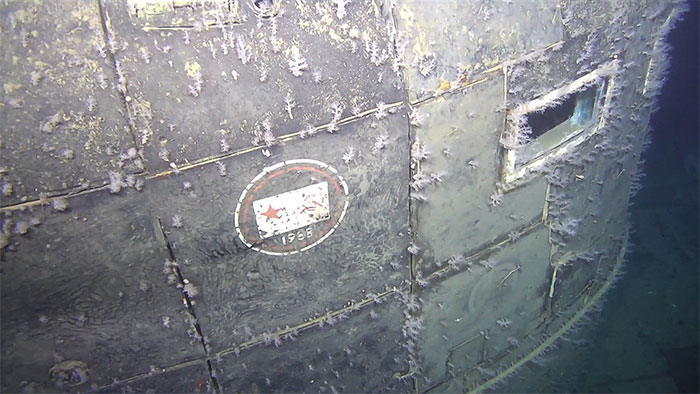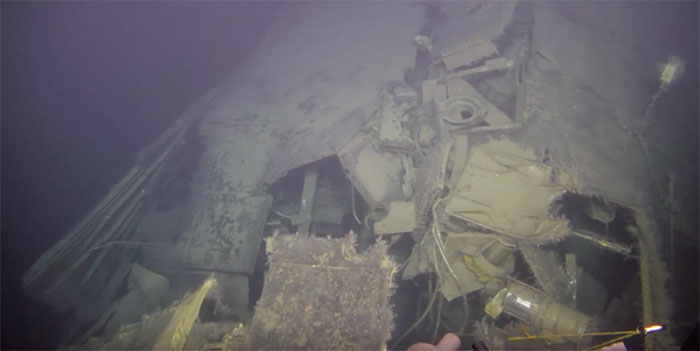Detection of radiation leaking from Russian submarines at the bottom of the Arctic
The Komsomolets submarine sinking in 1989 killed 42 sailors as the Soviet tragedy's most tragic accident, researchers found radioactive leaks.
Norwegian researchers claim to have detected radioactive leaks from the Soviet nuclear Komsomolets submerged deep in the Arctic Sea in 1989.

Komsomolets nuclear submarine sinks deep in the Arctic Sea in 1989. (Photo: RT).
According to Norwegian national television station NRK, the team obtained a sample of water from a submarine ventilation duct. Although the previous two models did not find any radioactive leaks, the third sample showed signs of radiation levels 100,000 times higher than conventional seawater.
'That is a preliminary result. We will examine the samples more carefully when returning to the country. The level we find here is 100 bq / liter (becquerel's bq, which is the measurement of the intensity of radioactivity) , 'explained Hilde Elise Heldal of the Marine Research Institute.
Two days ago, researchers from Russia and Norway jointly conducted a joint expedition to measure radiation leakage from the Komsomolets. Norwegian research ship GO Sars departs from a port in Tromsø.
Because submarines are located at 1,700 meters, the collection of seawater samples in submarines is considered a challenge. Researchers must use Norwegian-built mini Ægir 6000 submarines to photograph the scene.

The submarine of the Soviet Union was tragedy and sunk on April 7, 1989, sank in the southwestern part of the Norwegian Sea of Bjørnøya.
Researcher Heldal said she was not surprised by the results. A trip by Russian researchers in 2007 also found radiation leakage from deep-sea submarines.
Previous surveys of Norway in 1991-1993 also found elevated levels of radioactive cesium-137 in seawater around the ship. Since 1990, Norway has been surveying radioactivity around Komsomolets every year.
'It is important to maintain monitoring so that we can update the pollution situation in the area around the wreck. Monitoring helps ensure consumer confidence in the Norwegian fishing industry , 'said researcher Hilde Elise Heldal in the group.
The Soviet Komsomolets nuclear submarine struck tragically and sank on April 7, 1989 after a fire broke out in the engine compartment. Submerged submarine in southwestern Bjørnøya island of Norway. 42 out of 69 sailors were killed. Komsomolets is currently located at 1,700 meters deep with a nuclear reactor and two torpedoes.
- Russian submarines hit the Arctic bottom
- Video: See the moment when American nuclear submarines float through the Arctic ice
- What weapons are stirring up the Arctic?
- Russian non-nuclear submarines own attacks over 3,000km
- America takes advantage of Arctic ice to track submarines
- Reveal the utopian secret of life inside Russian submarines
- Russian monster submarine - Unbelievably scary weapon
- New details about the Arctic seabed expedition
- Dive to the bottom of the coldest lake in the winter
- Russia closed the giant submarine with wings twice as large as a jet
- Discover giant monsters at the bottom of the North Pole
- How does Russia's unmanned nuclear submarine destroy a terrible target?
 'Fine laughs' - Scary and painful torture in ancient times
'Fine laughs' - Scary and painful torture in ancient times The sequence of numbers 142857 of the Egyptian pyramids is known as the strangest number in the world - Why?
The sequence of numbers 142857 of the Egyptian pyramids is known as the strangest number in the world - Why? History of the iron
History of the iron What is alum?
What is alum?